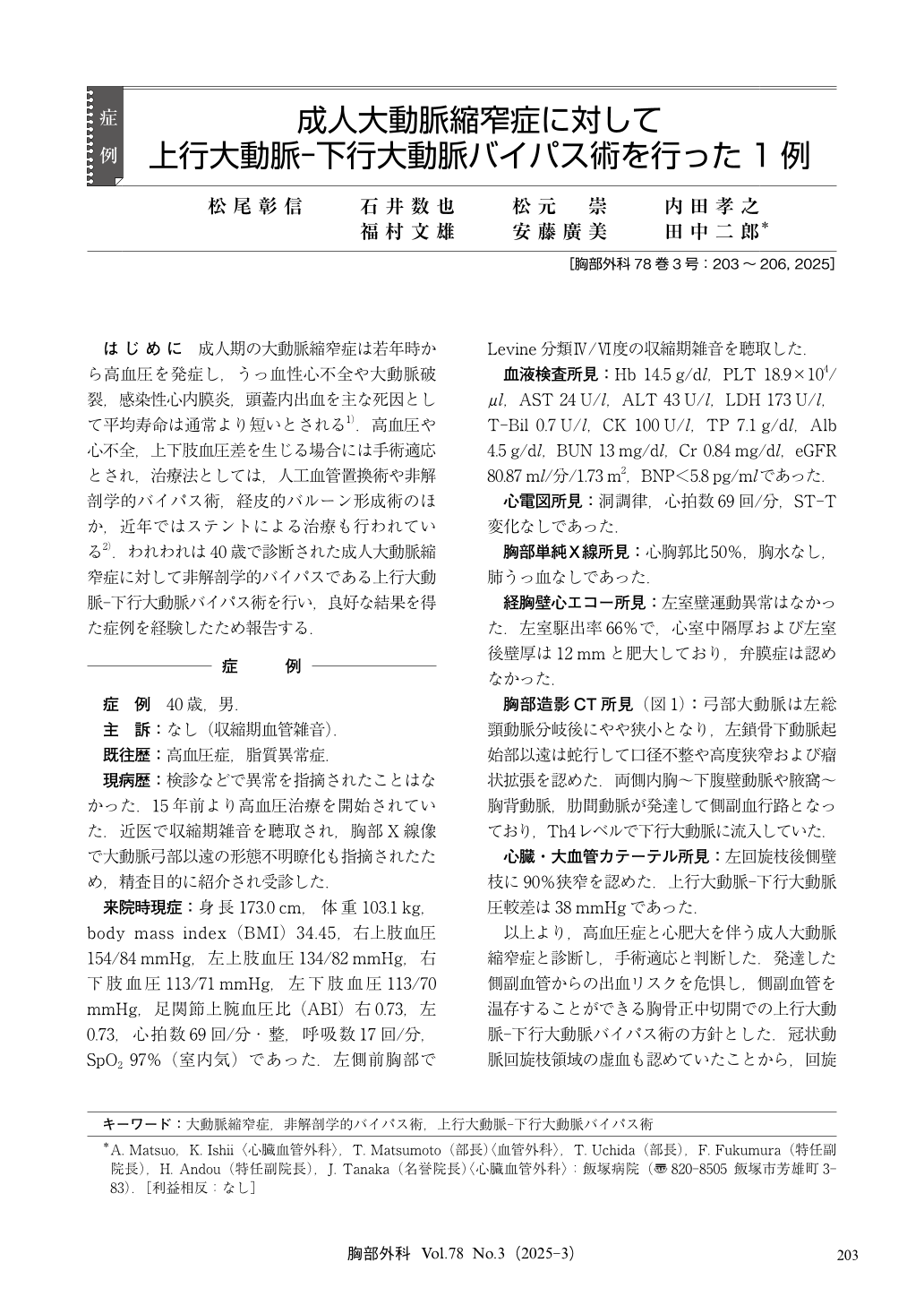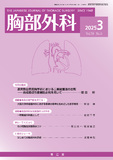Japanese
English
- 有料閲覧
- Abstract 文献概要
- 1ページ目 Look Inside
- 参考文献 Reference
はじめに 成人期の大動脈縮窄症は若年時から高血圧を発症し,うっ血性心不全や大動脈破裂,感染性心内膜炎,頭蓋内出血を主な死因として平均寿命は通常より短いとされる1).高血圧や心不全,上下肢血圧差を生じる場合には手術適応とされ,治療法としては,人工血管置換術や非解剖学的バイパス術,経皮的バルーン形成術のほか,近年ではステントによる治療も行われている2).われわれは40歳で診断された成人大動脈縮窄症に対して非解剖学的バイパスである上行大動脈-下行大動脈バイパス術を行い,良好な結果を得た症例を経験したため報告する.
A 40 year-old man presented with a systolic murmur after 15 years of treatment for hypertension. Bilateral ankle brachial index (ABI) was decreased, echocardiography showed cardiac hypertrophy and computed tomography (CT) showed aortic coarctation of the distal aortic arch. The left lateral thoracic wall had significant collateral vascular development;therefore, we performed an ascending aorta-descending aorta bypass via median sternotomy for protection of the collateral vessels and the prevention of hemorrhage. Coronary artery bypass surgery was also performed in the same surgery. Postoperatively, the hypertension improved and the ABI was mildly increased. Although left lateral thoracotomy and aortic replacement is the primary treatment for adult aortic stenosis, ascending aorta-descending aorta bypass with median sternotomy is a useful option to protect and avoid bleeding of collateral vessels on the left thoracic wall that enables the simultaneous treatment of cardiac complications.

© Nankodo Co., Ltd., 2025


